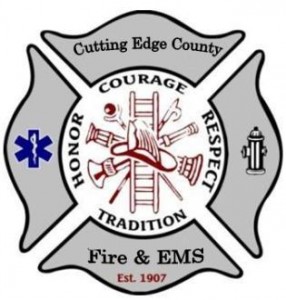By: Robert Avsec
In my previous missive, I discussed how the public’s expectations for the role 
Related Topic: 5 Must-Have Disaster Apps
 As first responders and emergency managers we know the value of learning and mastering new skills in the training environment. As one of my mentors, Chief Jim Graham, used to say, “Trying something new for the first time under emergency conditions is usually nothing less than exciting.”
As first responders and emergency managers we know the value of learning and mastering new skills in the training environment. As one of my mentors, Chief Jim Graham, used to say, “Trying something new for the first time under emergency conditions is usually nothing less than exciting.”
You have a great opportunity to become skilled and practiced at using social media to meet the meet your public’s expectations before a Hurricane Sandy strikes by using those tools to develop a Community Risk Reduction (CRR) Plan for your locality.
Successful Community Risk Reduction
In the following scenario, I’m going to describe the “actions” of a mythical community, Cutting Edge County (CEC) and Cutting Edge County Fire Rescue (CECFR), its Fire and EMS agency, as they work to develop a CRR plan for CEC.
Social Media Tools: Commonly used tools are Facebook,
witter, Hootsuite, Google+, Pintrest, and Tumblr.
We [CEC and CECFR] understand the key to successful community planning: It’s the people. True change and  continuous improvement only happens in communities when people feel that their voices are heard and when they observe meaningful and positive change.
continuous improvement only happens in communities when people feel that their voices are heard and when they observe meaningful and positive change.

- Creating a Facebook® page and Twitter® account at the beginning of the project. We will use these social media tools for two-way communication to:
- Keep stakeholders informed about the CRR plan’s progress and schedules, e.g., focus group meetings and Town Hall Meetings, etc.;
- Enable stakeholders to provide input for the study on their schedule, 24/7, via Facebook® and Twitter®;
- Identify emerging issues or problems using the “real time” information provided by stakeholders; and
- Engage in “rumor control”, that is, have the ability to proactively provide answers to questions or address erroneous information via Facebook® and Twitter® that may be posted on social media about the study.
- Conducting live focus groups to allow stakeholders the opportunity to provide input in person and we will use this information to craft questions for on-line surveys;
- Conducting on-line “Town Hall Meetings” using Facebook® and use that information to craft other questions for on-line surveys; and
- Conducting on-line surveys, using software such as SurveyMonkey® or Zoomarang®, specifically suited for various stakeholder groups to ensure that each group is able to use a survey tailored to their stakeholder relationship to this project.
Our team will use these social media tools in a coordinated effort to keep people informed about scheduled events, for example, using postings to publicize times and locations for focus group sessions. We will also use Facebook® to engage all stakeholders in two-way conversation from Day 1 of the project. Studies are being published every week that indicate a large and growing number of people are: (1) using their mobile devices, e.g., tablet computer or smartphone, more than they do a desktop PC; and (2) those same people are connecting to issues they care about via social media.
We feel the proactive use of social media can serve a critical function for the study in several ways:
- External and internal stakeholders can provide input to the process on Facebook® and Twitter® from Day 1 at a time and place convenient to them.
- We will have access to that input in real-time and can use that information to make informed decisions as the project progresses. For example, we may see multiple postings from a large number of stakeholders regarding an issue that had not previously been discussed, or even known to exist.
- Rumor control. Stakeholders can ask questions about the project on Facebook® orTwitter® and get real answers from a credible source (CEC or CECFR).
- The Twitter® account would provide another tool for our team to communicate quickly with stakeholders, for example, loss of power at a venue where a Town Hall meeting was to be hosted may postpone or cancel the scheduled event.
We will use information obtained from both types of focus groups to construct an on-line survey that we will publicize using Facebook®, Twitter®, postings on the CEC and CECFR websites, etc. We will use the survey to capture a larger cross-section of external and internal stakeholders to develop a higher confidence level for the information we use in developing the CRR plan. An example of a survey item might look like this:
By choosing to use social media tools to engage the stakeholders in its community in developing the Community Risk Reduction plan, Cutting Edge County is giving those same stakeholders an opportunity to become skilled and practiced in their use. Thus, when an event generator, e.g., tornado, hurricane, earthquake, train derailment, etc., occurs in CEC, CECFR and those same stakeholders will be more likely to use those social media tools for better interaction during the emergency.
Sound like a good idea? How would this work in your community?
Related Posts
DHS First Responder Communities of Practice
Emergency Managers Prepare for a Changing Disaster Paradigm
Sandy Marked a Shift for Social Media Use in Disasters
 Fire & EMS Leader Pro The job of old firefighters is to teach young firefighters how to become old firefighters!
Fire & EMS Leader Pro The job of old firefighters is to teach young firefighters how to become old firefighters!
